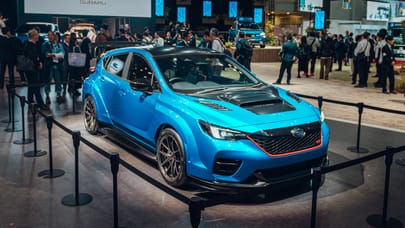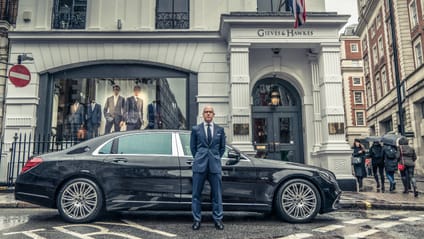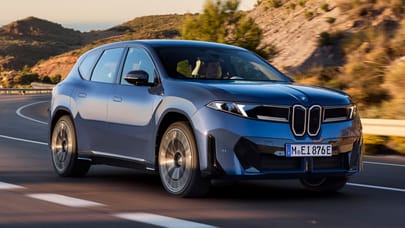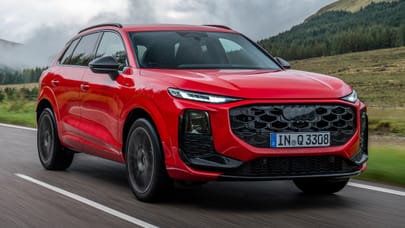
Top Gear's guide to chauffeuring
Want to drive posh people around for a living? Here's all you need to know


For the current issue of Top Gear magazine (on sale now, reputable newsagents etc…), Rowan Horncastle and I drove a Rolls-Royce Phantom to Courchevel. Well, I drove, he oligarched around in the back. The story’s a good one – I’d urge you to dig it out.
In order to truly live and breathe my role, I thought it would be good to get some training, to find out how a chauffeur actually ought to behave and drive, to pick up some tips. Turns out there’s quite a lot to know. What follows is TopGear’s rough guide to chauffeuring.
Advertisement - Page continues belowThe car

This one’s a Mercedes-Maybach. It’s a V12 because the more power you have the less of it you need to use. This is important. It’s why Rolls-Royce doesn’t have a rev counter, but a power reserve indicator. Here it’s being driven by a chap called Barry Woods. After 30 years in the police, he’s now a professional chauffeur. He and fellow chauffeur Ravi Dave were my guides through the minefields of how to open a door, how to steer, how to predict what radio stations people will want to listen to and so on.
The Chauffeur

“Be clean, neatly groomed and smartly clothed” suggests Ravi. This doesn’t come naturally to Top Gear so we went for help. To No.1, Savile Row, London. Gieves & Hawkes, founded in 1771, is a bespoke men’s tailor. They dress royalty. And now me.
The process isn’t anything like as daunting as I’d expected. Consultant tailor Andrew Brown helps me select a suitably sober suit – the general rule for a chauffeur is dark grey or blue, with a white shirt, single-colour tie and polished, unfussy black shoes. Job done.
Advertisement - Page continues belowPlanning

“The most important role of a chauffeur is to plan”, says Ravi. “Research your pick up point and drop off points, know in advance where the entry and exit points of the location are, have alternative routes worked out in case of incidents, road closures, accidents etc. If you’re unsure about the destination, ring ahead to the company or organisation you are working with and ask for advice.”
It turns out that the job of a chauffeur starts way before you get in the car. Preparation is everything: sweating the details, expecting the unexpected, foreseeing the unforeseeable.
“I use Google maps the night before to work out where I have to be and how long it’ll take me to get there”, Barry comments, “then I’ll typically contact the client to introduce myself with a phone message, tell them the car I’ll be in, the time I’ll be there and so on. I’ll then aim to be there 30 minutes early.”
Before the journey

Do you check your tyre pressures each week? Tread depth? Wipers? Lights and indicators? Us neither. But as a chauffeur you must – you are an extension of the car and vice-versa. It is the tool of your trade.
“Make sure you’re not going to need to stop for fuel – that’s the obvious one. But also make sure the screenwash is topped up – that’s the kind of attention to detail you need”, says Barry. Yes, just imagine if the low washer light came up on the dash, it’s bright orange glow a visual warning to Sir or Madam in the back that their chauffeur is clearly a clown.
Cleanliness

“Each client expects high standards and not excuses,” says Ravi, “so each customer should experience a refreshed car, paying particular attention to touch points, carpets, windows and wheels. Door shuts and boot shuts should be wiped clean, carpets and mats should be swept out after each use - including the area around the edge of the mat. All contact points the client might touch should be microfibred down – so there are no finger or grease marks show. A good exercise is to sit in the passenger’s seat and view what the passenger will see in your car from his seat. And don’t forget the windows! People look out of them.”
We’re not done yet. Here’s Barry: “the car, as far as practicable, should be in showroom condition. I always keep a bag of cloths in the boot. And inside nothing should be on display, not even your phone. In the back though, you might want to have some small bottles of water (the big ones can fall out of cupholders), a box of tissues and maybe some mints and a paper.”
The greeting

Not only must I try to position the car where my client will be coming out, but I should also send them a ‘notice of imminent arrival’ message about 10 mins before. And if I’m working with high profile clients, I need to allow extra time for security to give the car a thorough once-over.
“Don’t forget what a customer will notice”, says Ravi, “the first 12 steps you take, the first 12 things you say, the first 12 inches of your face. So think about your body language, clarity of speech, and don’t forget to smile! Introduce yourself with a firm handshake, clear eye contact and a warm, confident, friendly, reassuring welcome”.
Advertisement - Page continues belowCar entry

We’re in the UK, so on most days of the year it’ll be umbrella in your right hand, door handle in your left. If it’s Rolls Phantom (think about it), swap that around. Once the client is in, the door should be closed in one smooth, even movement.
Ravi points out. “you have to be mindful of the hierarchy amongst some business cultures – they can have preferences on who sits in front of which way they face each other. Do your research with the client’s office.”
Driving

“Imagine a glass of champagne”, Barry tells me. I have no difficulty doing this. “Well, from the moment your passengers get in to the moment they get out, they should not be spilling a drop. No matter how full that glass is.”
The key is to operate the car as smoothly and efficiently as possible. There’s unlikely to be any need to use more than 20 per cent of the car’s potential. So look ahead; predict, instead of reacting and when you glide to a halt, lift the brakes j-u-s-t before you come to a stop as this will help prevent the dreaded nose-lurch.
Also: don’t let the wheel slide through your hands – this creates an unpleasant rasping noise. Instead, shuffle. Like you had to do for your driving test and haven’t done since.
Advertisement - Page continues belowObey the highway code

“If your client asks you to speed, you should always politely decline”, says Barry, “same goes for driving down a bus lane – which I have been asked to do occasionally”.
I suspect it’s harder to disobey if you’re actually the permanent employee of the chap in the back…
Pre-setting

It’s not just about making sire the car is clean. You also need to think about temperature (21 degrees seems to be the agreed norm in chauffeuring circles). “Typically I’ll have the rear heating zones at 21 degrees, with the fan on 2 and airflow to the feet” Barry tells me.
Then there’s the question of to radio or not to radio. “I’ll look at who I’m picking up and choose accordingly. I do some chauffeuring during London Fashion week and it’ll always be Kiss FM on the radio. Sometimes they want to plug in their own, often people work on their laptops. Most of the time I’ll go for a BBC channel because there are no adverts.”
Just bear in mind that in some cars, if you deactivate the rear windows from the front, it also disables all the rear systems – seats, heating, infotainment. This will not amuse the average tech start-up CEO.
In the car

No slouching. Keep two hands on the wheel, don’t rest your elbows, you need to pay attention and come across as alert, confident. Don’t forget you’re projecting an image. Show you are in control of yourself, the car and of the client’s experience.
Oh, and remember MSPSL. Come on, you know this one – mirror, signal, position, speed, look. Just go easy on the mirror, because…
Rear-view mirror

“Be aware that clients from some cultures don’t like being seen in the rear-view mirror”, says Barry, “so you might need to adjust that out the way and rely on your side mirrors instead.”
“Also,” continues Ravi, “during the journey adopt the policy ‘speak when spoken to’ and judge each customer before engaging in any in-depth conversation. Customers often reply and talk out of politeness but not necessarily because they want to!”
Route choice

Ideally, I should have the route committed to memory. However, technology has given us sat nav and live traffic reports. Barry tells me, “if I can, I’ll discreetly have two sat navs running – the in-car system and probably Waze on my phone. But you also need to take into account client choice. I had a client who lived in Hampstead and always wanted to drive back through Regent’s Park as it was a more relaxing route home. You have to be sensitive to those sort of things. So you should always ask if they have any preferred route.”
Apps on phone for parking

Parking in a city centre is a pain. Mostly it’s now controlled by apps such as Ringo, linked to parking meters and bays. You need to have these on your phone with the car and card details already logged so you can quickly get sorted. Then you can thumb your nose at traffic wardens.
Parking

“Swoop is the wrong word,” says Barry, creating images of birds of prey in my mind, “but you don’t want to be pulling up and then having to reverse. It has to be one fluid, flowing, forward motion. Get the client out of the car and then you can sort it out.”
Heels to wheels

A relatively old-fashioned phrase this, but it refers to how the chauffeur stands to open the car door. You stand facing away, as this has two main benefits: it gives you a 180-degree field of view up and down the pavement, and it means you’re not looking at the client as they emerge – important if it’s a lady in a short skirt.
If however, you have a security guard travelling with you, the pair of you stand either side of the door, facing away up and down the pavement. That way you both have vision across to the other side of the road, too. “Look out for unsavoury characters, traffic situations, fast cars approaching and where possible instruct your client politely to wait until you have control of the door.”
Protecting the client is your job until they’re safely indoors. “Paparazzi pose problems for us of course,” says Barry, “it’s very difficult to protect someone’s modesty from cameras these days, but if it’s a lady in a short skirt I’ll be more obstructive in the doorway, and if it’s really difficult you can always use your umbrella to provide more cover. It might look a bit ridiculous, but I’m there to help the client.”






